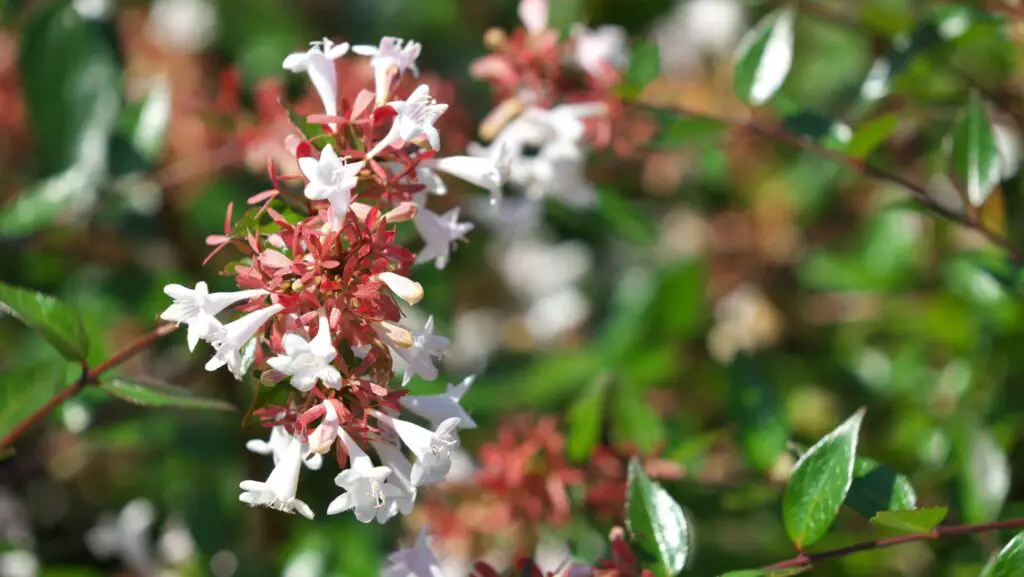
The abelia is discreet but decorative all year round thanks to its foliage, its many small flowers, and even its colorful bracts that persist long into the fall after flowering is over.
In this article, I have gathered for you all the information about this plant, its main characteristics and what you need to know to plant and grow it.
Characteristics of the abelia plant
| Scientific name | Abelia x grandiflora |
| Family | Caprifoliaceae |
| Origin | China |
| Foliage | Evergreen to semi-evergreen |
| Flowering | June-October |
| Rusticity | -8°C to -10°C (-46°F to -50°F) |
| Exposure | Sun |
| Soil | Indifferent but light |
The many brittle branches of the abelia provide a dense bush. It bears small, pointed, leathery green leaves and numerous small pink flower buds that hatch into single white or pink bells. Its port is more or less spread out, but from the crown leave big erect branches which assure the growth in height of the shrub, which exceeds 1,50 m in good cultural conditions.
How to grow abelia
The abelia is not very demanding; however, it must be protected from strong winds. However, breakage is quickly repaired as this species is very resistant to pruning and grows back vigorously without delay. Watering should be regular: the abelia reacts quickly to a lack of water with a heavy leaf fall – which fortunately can be quickly stopped.
Full sun is recommended. If the shrub can live with light shade, it is at the expense of a plentiful bloom.
At the end of autumn or in winter, prune by removing half of the vegetation, and even more in the case of subjects to be reformed.
How to grow abelia in pot
Abelia is less vigorous in pots, but you can still grow it for several years – as long as you provide a container twice the size of the original little plant.
Avoid water that is hard or too chlorinated – this is often the case with tap water – which causes chlorosis that you will have to correct permanently with iron chelate.
Do as some gardeners do and add a quarter of heather soil to the potting soil, for growing in pots.
Where to plant an abelia shrub
You can plant the abelia in isolation, in a low free-form hedge or even trimmed to a square, in beds, or even in a pot for the compact type. Bring some light to it by associating it with variegated shrubs such as golden and silver fusains.
Our selection
Here is a list of varieties we had to share with you:
- Abelia × Grandiflora with its white bells is the most common, very good choice in our opinion.
- The variety ‘Compacta‘ is superb in cascades in rock gardens and along staircases.
- A. × ‘Edouard Goucher’, with deep pink flowers, is the most resistant (down to -15°C).
Lovers of variegated foliage can plant these two soft pink flowering abelias:
- ‘Hopleys‘, tinged with yellow.
- ‘Confetti‘, with leaves edged in white and shaded with pink in spring.
In a nutshell
Overall, the Abelia plant is a fabulous addition to any garden. It’s an easy-to-grow, low maintenance flowering shrub that adds vibrancy and color. Its leaves provide an appealing texture to the landscape and its range of varieties offer various shapes and sizes. With its ability to thrive in virtually any type of soil and its attractive flowers, the Abelia plant is undoubtedly a great choice for any green thumb looking to add a new dimension to their garden.

Hi!
I am the guy behind Theyardable.com. I grew up on a homestead and I am here to share the knowledge I have and things I learn while living in the countryside.
